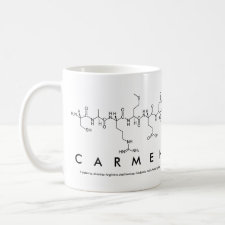
Authors: Díaz-Díaz G, Diñeiro Y, Menéndez MI, Blanco-López MC, Lobo-Castañón MJ, Miranda-Ordieres AJ, Tuñón-Blanco P
Article Title: Molecularly imprinted catalytic polymers with biomimetic chloroperoxidase activity.
Publication date: 2011
Journal: Polymer
Volume: 52
Issue: (12)
Page numbers: 2468-2473.
DOI: 10.1016/j.polymer.2011.04.004
Alternative URL: http://www.sciencedirect.com/science/article/pii/S0032386111002825
Abstract: A method for the rational design of molecularly imprinted polymers with catalytic activity (MICs) that mimic hemeproteins is described. Density Functional Theory calculations applied to the pre-polymerization adduct and to a possible reaction intermediate allow to choose the best functional monomer that builds up the active sites. This functional monomer should stabilize both relevant stages, the first one in an adequate porogenic solvent and the second one in the aqueous reaction medium. In this work, a MIC was synthesized to catalyze the oxidation of 2,4,6-trichlorophenol (TCP), the substrate and template molecule. A hemin molecule was used as the catalytic centre and four functional monomers and six solvents were tested. According to the theoretical predictions, methacrylamide and 4-vinylpyridine MIPs successfully mimic the recently discovered ability of Chloroperoxidase (CPO) to catalyze the oxidative dechlorination of TCP in batch analysis. They exhibit good catalytic properties and substrate selectivity
Template and target information: 2,4,6-trichlorophenol, TCP
Author keywords: artificial enzymes, Density functional calculations, molecularly imprinted polymer



Join the Society for Molecular Imprinting

New items RSS feed
Sign-up for e-mail updates:
Choose between receiving an occasional newsletter or more frequent e-mail alerts.
Click here to go to the sign-up page.
Is your name elemental or peptidic? Enter your name and find out by clicking either of the buttons below!
Other products you may like:
 MIPdatabase
MIPdatabase









